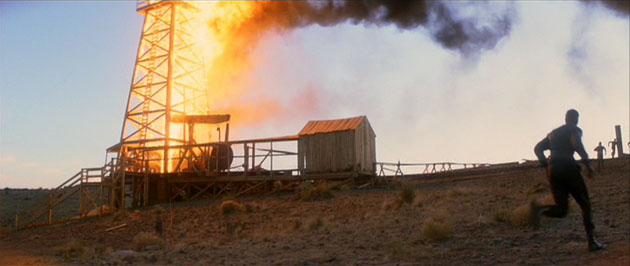Jack Fisk

So I started doing everything. I didn’t know the boundaries or what they expected so I did everything I could think of. I’ve been doing that ever since. When you don’t know what you are doing, you’re reinventing the wheel, but I didn’t have any options. I didn’t know how to make flats but I had a pickup truck and some tools and a lot of energy. At that time working for Roger Corman’s company was like going to film school. On-the-job training.
In 1972 I met Terrence Malick. He was going to AFI the same time that David Lynch was there and was about to make his first feature. I’d heard through mutual friends he was doing this period film. I thought, Oh, I’d love to do a period film. A friend introduced us and Terry was like, Can you start? Can you go out to Colorado in May? And I said, Sure. I rented a van, put all my tools in it and drove to Colorado and on July 10th we began shooting.
AS: Was that Badlands?
JF: Yes, Badlands. And it was an exciting film for me because it was the first time I saw that film was an art form equal to painting or sculpture, or music.
AS: You’ve had a career working with directors who are artists.
JF: Yes, I’ve been very lucky, and I’ve done two films recently with Paul Thomas Anderson, and it’s the same thing, he’s an artist.
AS: Did you hire a local crew when you went out to do Badlands?
JF: I hired a kid named Kenny Hilton who lived in La Junta, Colorado and I called a friend who I’d met at Pratt when I was going to Cooper Union and asked him if he wanted to work on a film. He was doing nothing so he came out. And that was Ed Richardson. He went on to become an art director.
The first film I remember having an art director on was Thin Red Line. On a lot of them I didn’t even have decorators! I was doing what I could. Bill Paxton was a part of my team on the Corman films and up through Carrie, but he later gave up the art department for acting and directing. I was always grabbing anybody I could. Anybody who was willing to stay up all night and work could be part of the team.
I used to measure how passionate I was about a film by how many nights I would be up all night. Oh, that’s a three-nighter film! I got ten days in a week because I figured I could work during the day and during the night. We’re going to shoot in four days, but if I get in trouble I’ve got eight days. I can’t do that anymore. But I just finished a film with Paul and I had one day that was thirty hours. We were prepping sets in LA and shooting in San Francisco. So I flew down to LA at 6 o’clock in the morning then back to San Francisco for a night shoot. We shot all night and in the morning we drove to the country outside of San Francisco and shot there until 10:30 a.m.
Pingback: K.K. Barrett
Pingback: Laurence Bennett
Pingback: Adam Stockhausen
Pingback: Colin Gibson